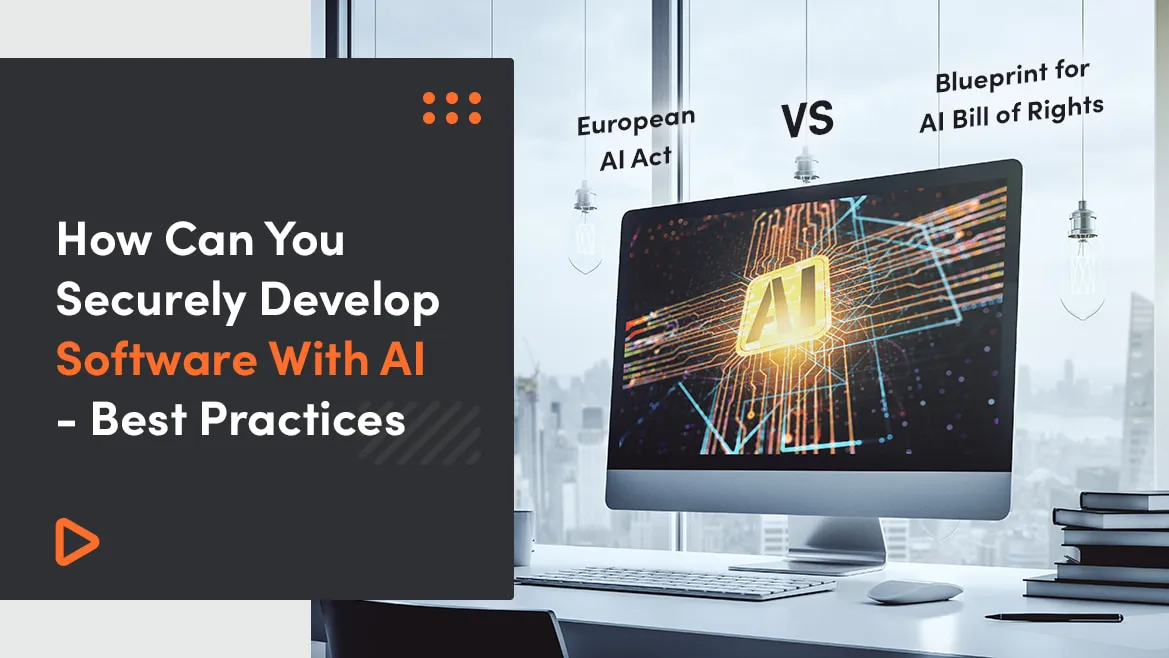Industries like EdTech and HRM are using AI functionalities of various tools to increase platform efficiency and effectiveness.
By 2024, it is anticipated that both industries will continue to see growth in the use of Artificial Intelligence due to continuous technological breakthroughs and growing awareness of the potential advantages these technologies can provide for improving HR and educational results. The fact that these industries are still expanding shows how important artificial intelligence and machine learning are changing conventional methods into ones that are more effective, individualized, and data-driven.
This article aims to provide an understanding of AI systems and how they are combined with SaaS platforms to enhance the productivity of SaaS businesses.
In this article, you will learn:
- What are the core AI functionalities in SaaS platforms?
- How AI technology is adding more functionalities in SaaS software or platforms?
- How AI-powered EdTech system can help tailor the learning needs of individual students?
- How AI-powered HRM system can eliminate repetitive tasks?
- How natural language processing with AI tools can help the SaaS industry?
- How to manage Generative AI technology in application development?
Expert Insights:
- A compound annual growth rate (CAGR) of 36.0% is anticipated for the worldwide AI in the education industry, which was estimated to be worth $2.75 billion in 2022 and would reach a valuation of $3 billion by 2030.
- About 38% of HR directors in 2023 have investigated or used Artificial Intelligence to increase process efficiency
- 76% think their companies might lose out on business opportunities if they don't use AI in the next two years.
- SaaS companies are gradually increasing the integration of AI and machine learning in their platforms to perform sophisticated analytics, automate processes, and improve user experiences.
- Generative AI and machine learning integration with EdTech SaaS solutions provide customized learning experiences to each learner's needs.
- It also maximizes engagement among learners and academic results.
What Are the Core AI Functionalities in SaaS Platforms?
Many SaaS businesses, from LMS to HRM, are integrating AI tools and machine learning algorithms in their SaaS solutions to perform analytical and repetitive tasks. AI tools in SaaS systems offer a practical advantage with their extensive insights and analytics to data scientists. Imagine a digital marketing platform that can measure user behavior across multiple channels, pinpointing the most effective lead conversion techniques.
This data-driven approach is invaluable for marketers aiming to optimize their efforts and maximize ROI.
Moreover, the AI model can suggest new content or marketing techniques based on observed target audience habits, providing a real-time competitive edge for data science.
AI SaaS platform can also provide refined insights and customized suggestions. These systems employ machine learning models to provide tailored recommendations that can assist users in improving their accounts, increasing their revenue, and saving time.
For example, in e-commerce platforms, AI-powered tools can perform inventory modification by analyzing user behavior from past sales and market circumstances.
Try our developers.
Free for 2 weeks.
No risk. Just results. Get a feel for our process, speed, and quality — work with our developers for a trial sprint and see why global companies choose Selleo.
AI Functionalities in the EdTech Sector

AI integration in EdTech SaaS solutions can help organize complex information, draw conclusions independently, and engage in meaningful and coherent dialogue.
Many EdTech SaaS software companies have already begun combining knowledge-based AI to create solutions tailored to individual needs.
Through gamification and customized learning pathways, businesses will offer more tailored services, especially with personalized learning materials for students, maximizing the learning process according to their performance and preferences.
How Personalized Learning Paths Impact User Experience in SaaS Platforms?
Personalized learning paths have greatly impacted the user experience of SaaS platforms. Some of the most important aspects are as follows:
Adaptive Classrooms
Artificial Intelligence solutions can help to ensure using adaptive teaching to modify the speed and technique of teaching using students' immediate input.
It helps deliver teaching strategies to meet each student's unique learning requirements and preferences.
By focusing on areas in which students may thrive or struggle, this dynamic method helps to enhance educational outcomes while retaining student interest.
Automated Exam Evaluations
Another area where AI is enhancing educational experiences is automated exam evaluations. AI systems can grade tests and assignments quickly, giving students instant feedback. This expedites the evaluation process and frees instructors' time to focus more on teaching activities than administrative duties.
Analytical Assessments
Furthermore, AI-driven analytics tools can evaluate student performance data over time, pinpointing particular areas for growth and providing insights into the student's progress.
Benefits of AI in Personalized Learning for Businesses
AI's potential in business is vast, particularly in personalized learning. Employers can leverage AI to design training programs that adapt to their staff's unique skills and learning preferences. This enhances workforce development and efficiency and enables individuals to progress in their careers more rapidly and align their skill sets with the company's needs.
How Does AI-Powered Gamification Enhance Online Learning?
Gamification has a major effect on learning. Research has indicated that applying gamification strategies might boost students' motivation and level of involvement.

A study by the eLearning Guild claims that gamification can boost student engagement by up to 60% by making instructional content more approachable and enjoyable.
The main goals of gamification in SaaS applications are to increase learning outcomes and participation by introducing competitive and interactive features that enhance the learning experience. Fundamental characteristics like adaptive learning and real-time feedback further enhance this.
Engagement and Improved Learning Outcomes
Gamification in SaaS applications makes learning more engaging and effective, catering to modern preferences for interactive and personalized digital experiences. Gamification's ability to make learning interactive also leads to higher retention rates than traditional learning methods.
Adaptive Classroom
The adaptive learning feature enables the system to respond instantly to user actions and adjust tasks based on the learner's proficiency level. It modifies task complexity by the learner's success rate, preserving a balance that keeps the person engaged but not overburdened.
Real-Time Feedback
Real-time feedback, for example, gives students immediate insights into their progress, modifying and making a more successful learning cycle.
Overall, gamification is strategically used in SaaS applications to meet expectations for customized and interactive digital experiences while making learning more effective and entertaining.
AI Functionalities in the HRM Sector

Because of AI-driven solutions, the earliest phases of recruiting take much less time and effort, allowing HR experts to focus on speaking with the best applicants. AI functionalities help the HRM sector in many cases, some of the most important are as follows:
Using AI for Automated Recruitment and Screening
Here are some ways HR teams can leverage automation and AI in talent acquisition.
Talent Assessment: AI analyzes large datasets to identify candidates' skills and experiences that match job requirements, streamlining the preliminary screening process.
Candidate Discovery: Recruiters typically devote 13 hours weekly to finding candidates. AI expedites the search for qualified candidates by scanning social media, job boards, and databases, significantly reducing the time recruiters spend on these tasks.
Resume Screening: Employers often receive 250 job applications for every job opportunity. AI tools automatically parse and evaluate resumes, focusing on education, work history, and skills, which helps quickly filter out less suitable applicants.
Background Checks: AI automates comprehensive background checks by pulling information from various databases, ensuring candidates meet company standards without needing external agencies.
Real-Time Communication: 67% of candidates prefer organizations that provide regular updates during the hiring process. AI-powered chatbots update candidates on their application status, enhancing transparency and improving the candidate experience.
Virtual Interviews: AI-driven systems facilitate remote interviews, allowing recruiters to assess candidates' communication and interpersonal skills through digital platforms.
Offer Generation: AI crafts personalized job offers based on candidate data and job criteria, making the process efficient and consistent.
Onboarding Automation: AI simplifies the onboarding process by handling paperwork, compliance, and initial training, ensuring a smooth transition for new hires.
Using AI for Performance Monitoring & Employee Engagement
Artificial Intelligence (AI) revolutionizes HR analytics by automating repetitive tasks and analyzing complex data sets. This automation allows HR professionals to focus on strategic initiatives rather than repetitive data processing.
AI's capability extends to predictive analytics, pivotal in forecasting trends and outcomes such as employee turnover rates and engagement levels and identifying potential employee flight risks.
By analyzing historical data through machine learning algorithms, AI provides insights into future trends, helping HR teams to proactively manage workforce dynamics.
Additionally, AI helps measure sources of employee engagement, such as career advancement opportunities, recognition programs, and flexible working conditions. By understanding these key factors, HR teams can prioritize initiatives that significantly impact employee morale and productivity.
How to Manage AI in Software Development of SaaS Apps?

AI-powered tools will transform how teams create, produce, document, distribute, and troubleshoot app development.
Developers might also employ AI as a go-between for teams, stakeholders, and consumers.
AI can accelerate feature additions, issue repairs, and support requests for human developers.
These changes stem from a few key sources:
- Software developers' focus will shift from design to platform thinking. Previously, developers wrote code for outcome-oriented design. Developers will now concentrate on platform operation in goal-oriented design.
- AI will support the creation of specifications, acceptance criteria, and user stories. Developers will provide this information to business analysts, who will ensure it fits with their overarching plan.
- AI will help with simple user interface design; human developers will handle more intricate interaction design components. Designers construct a user interface (UI) to assist users in navigating through pages and processes for which AI has laid the foundation.
- AI will produce continuous output. It can help agile teams produce large amounts of code and prepare PRs for team review. With AI support, developers can feel more consistent in their delivery by increasing their overall pace of work.
The importance of testing will increase. As AI generates more code, teams must provide the infrastructure necessary to test it thoroughly. If problems arise, QA engineers will evaluate end-to-end functionality and develop additional regression tests.
Summary
AI-powered SaaS platforms are revolutionizing productivity and efficiency in several industries, most notably in EdTech and HRM. AI improves learning experiences in EdTech through adaptive learning strategies and tailored learning pathways.
Additionally, AI brings about gamification, which adds fun and interaction to learning environments.
Due to increased engagement and motivation to study, students show higher retention rates and get better results.
Artificial intelligence simplifies HRM procedures like hiring and performance reviews. AI-powered recruiting solutions can swiftly scan and assess many applications to find the best applicants while reducing human bias.
In addition, the employment process guarantees better applicant selection. Using AI features for staff management offers real-time feedback and constant performance monitoring, which is essential for maximizing worker productivity.
AI solutions also promote employee engagement by examining feedback and interaction patterns to pinpoint areas that require development in the workplace. When taken as a whole, these AI-driven features aid businesses in both industries in being more scalable, effective, and efficient.





